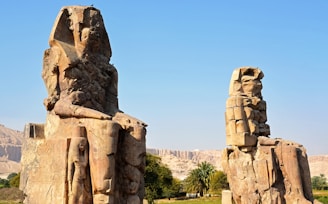Piye - King of Egypt
Piye (once transliterated as Pankhy or Piankhi) was an ancient Kushite king and founder of the Twenty-fifth Dynasty of Egypt, who ruled Egypt from 744–714 BC. He ruled from the city of Napata, located deep in Nubia, modern-day Sudan. He invaded Egypt from the south and ended the petty kingdoms of the 23rd dynasty in Lower Egypt. According to Egyptian tradition, his brother Shabaka founded the 25th dynasty, but Piye laid the foundations.
AFRICAN HISTORY


Piye (once transliterated as Pankhy or Piankhi) was an ancient Kushite king and founder of the Twenty-fifth Dynasty of Egypt, who ruled Egypt from 744–714 BC. He ruled from the city of Napata, located deep in Nubia, modern-day Sudan. He invaded Egypt from the south and ended the petty kingdoms of the 23rd dynasty in Lower Egypt. According to Egyptian tradition, his brother Shabaka founded the 25th dynasty, but Piye laid the foundations.
The kingdom of Cush, of which Piye was ruler, emerged out of the Egyptianized population of the Sudan near Mount Barkal, between the third and fourth Nile cataracts. The cult of the Egyptian god Amon Re was strongly entrenched among the Cushites, and a threat by Tefnakhte, a Libyan chieftain of the Nile delta, to Amon’s homeland in Upper Egypt provoked Piye to move northward.
Following a ritual visit to Thebes, Piye’s forces met the Libyans’ river fleet and defeated it. They then vanquished a land army near Heracleopolis, in Middle Egypt, and advanced to take Hermopolis, another Middle Egyptian stronghold of the Libyans, and Memphis, Egypt’s ancient capital. Piye received the submission of several delta potentates and, later, of the last representative of the 23rd dynasty. He then invaded the delta, where more local rulers surrendered. Finally, Tefnakhte sent a message of submission, and Piye sent an emissary to obtain his oath of fealty. After some final submissions by holdouts, Piye sailed home to Mount Barkal with the spoils of his venture. He remained in his capital and was buried there; the great stela recounting his deeds also was found there and is dated in the 21st year of his reign.
Piye adopted two throne names: Usimare and Sneferre. He was passionate about the worship of the god Amun, like many kings of Nubia. He revitalized the moribund Great Temple of Amun at Jebel Barkal, which was first built under Thutmose III of the New Kingdom, employing numerous sculptors and stonemasons from Egypt. He was once thought to have also used the throne name 'Menkheperre' ("the Manifestation of Ra abides") but this prenomen has now been recognized as belonging to a local Theban king named Ini instead who was a contemporary of Piye.
